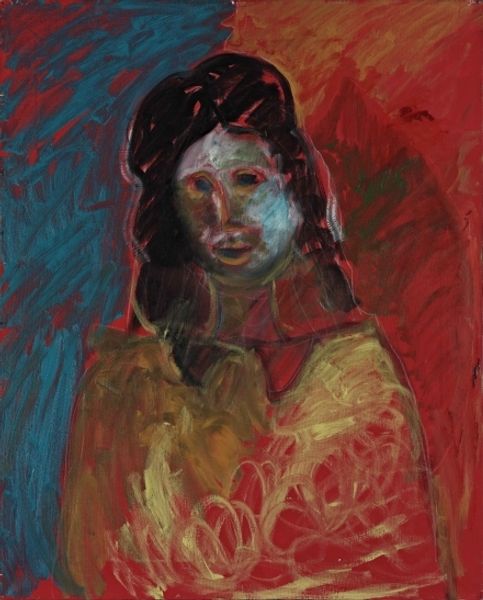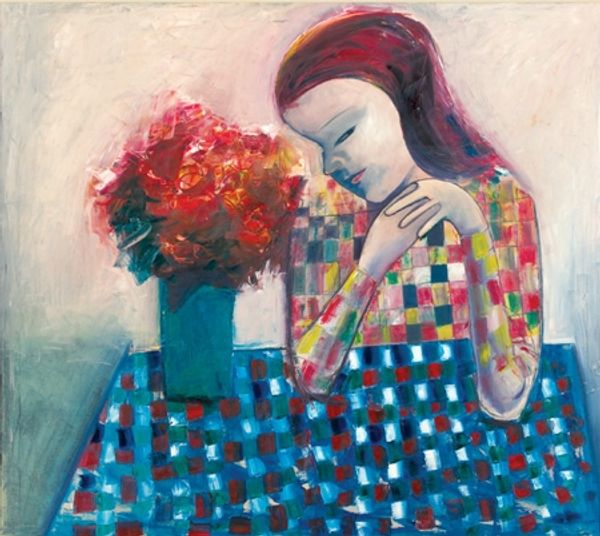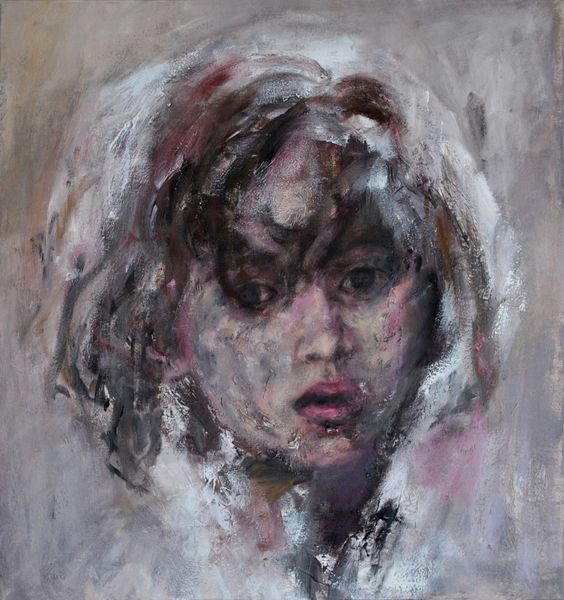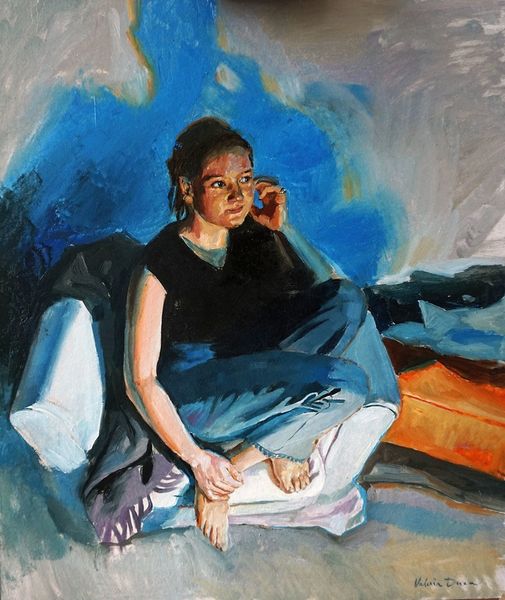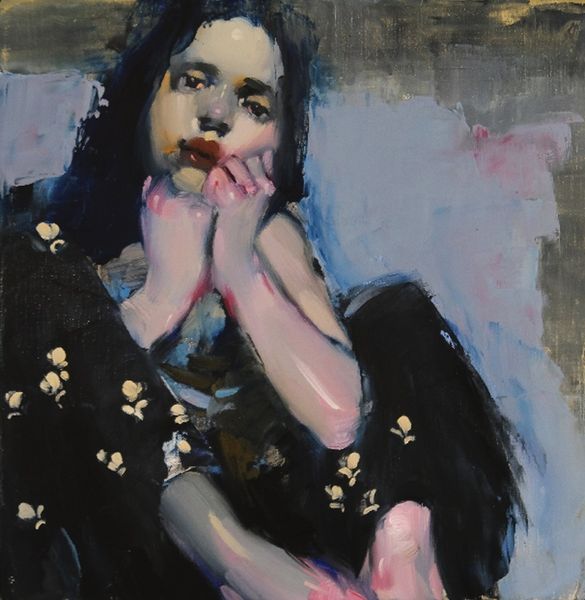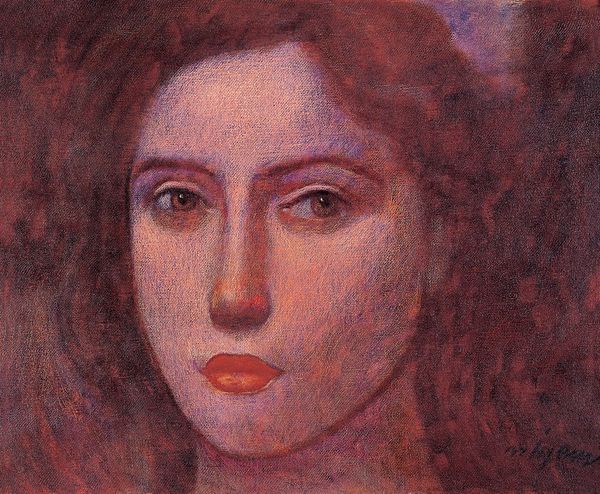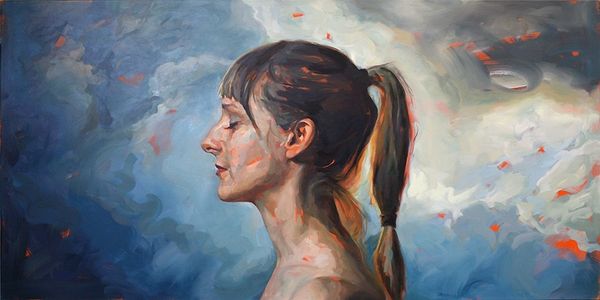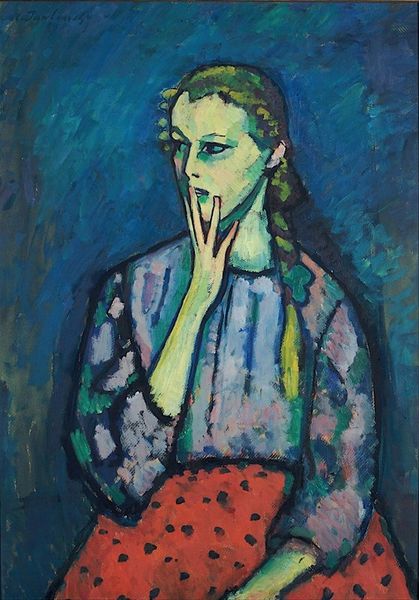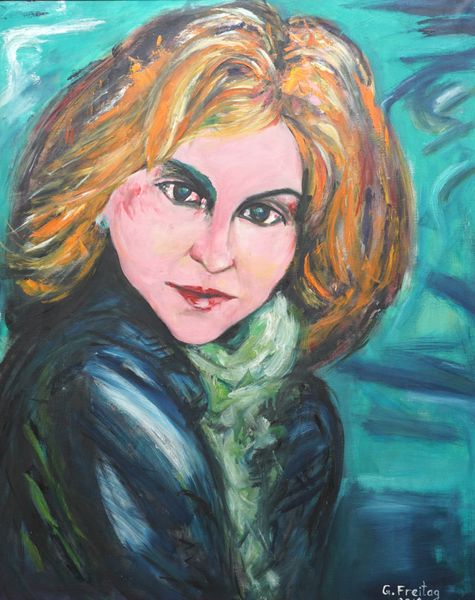
Dimensions: 100 x 80 cm
Copyright: Copyright: Gazmend Freitag
Editor: This is "Nadège at the sea," an acrylic painting by Gazmend Freitag from 2011. I'm immediately struck by how the artist uses such vibrant colours in the woman's face, even though the overall mood seems contemplative, almost melancholic. How do you approach interpreting this piece? Curator: Well, considering the formal elements, let’s examine how Freitag manipulates colour and form to construct meaning. Notice the impasto technique, where the paint is applied thickly. This builds texture, doesn't it? See how the strokes create a sense of movement, almost instability? It doesn't necessarily lend itself to that melancholic read. Editor: That's true; it gives it a dynamic feel. The bird in flight also adds to that, contrasting with the woman's stillness. Curator: Precisely. The artist intentionally uses non-naturalistic colour – look at the blues, reds, and yellows on the face. Rather than representing reality, these colour choices emphasize the artwork's constructed nature and express a subjective response. How does the painting's structural composition inform your interpretation? Editor: I think the gaze is directed off-canvas creates a certain tension... or yearning. The sea horizon sits quite low too, creating quite a bit of depth. Curator: An interesting point. I find the painting achieves its effect from the interplay of texture, color, and dynamic brushwork which serve to destabilize fixed interpretations and meaning, as with the subjects emotional landscape. Editor: I hadn't considered how the impasto affects the emotional reading that I experienced upon seeing the painting, and I agree it complicates any attempt at a fixed reading. Curator: Indeed. Formalism pushes us to really look closely at how an artwork's elements, the material facts of the painting if you like, creates the sensation that we as viewers subjectively experience.
Comments
No comments
Be the first to comment and join the conversation on the ultimate creative platform.
